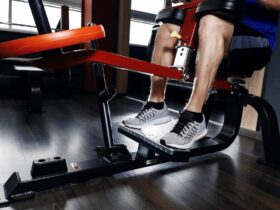Are you experiencing persistent back pain, stiffness, or discomfort?
With the increasing prevalence of sedentary lifestyles and poor posture, more and more people are facing chronic back issues.
Enter somatic workouts for back pain – an effective approach that can significantly alleviate your symptoms.
This article provides a comprehensive breakdown of somatics, specific exercises targeting lower and upper back pain, and helpful tips to maximize your workout.
Understanding Somatics: A Holistic Approach
Somatics focuses on improving neuromuscular feedback loops between the brain and body, promoting functional movement patterns.
It emphasizes the importance of becoming aware of our internal sensations and mindfully engaging in movements to recalibrate the muscle memory.
As such, it offers an alternative to conventional treatments, addressing not only the physical aspects of back pain but also incorporating mental and emotional factors.
Read more : What’s the difference between somatic exercise and yoga, exactly ?
The H.S. (Hanna Somatic) Method
Developed by Dr. Thomas Hanna, the Hanna Somatic Education method is based on the idea that muscles become chronically contracted due to stress, injury, or repetitive strain.
These contractions contribute to postural imbalances, joint compression, and limited mobility – all potential causes of back pain. The H.S. method aims at reversing these contractions through slow, mindful movements called pandiculations.
Getting Started with Somatic Exercises for Back Pain
Somatic exercises should be performed in a quiet, comfortable space that allows you to focus on your internal sensations.
Wear loose clothing and use a mat or carpeted surface for added comfort. It’s also recommended to warm up with some gentle stretching or breathing exercises before diving into the main workout.
Lower Back Pain Relief: Arch & Flatten
This exercise targets the muscles around your lumbar spine and pelvis and is an excellent starting point for addressing lower back pain:
- Lie on your back with your knees bent and feet flat on the floor, hip-width apart. Place your hands on your lower abdomen.
- Inhale as you gently arch your lower back, letting your tailbone lift away from the floor. Keep your shoulders and neck relaxed.
- Exhale as you slowly flatten your back against the floor, tucking your tailbone under and engaging your abdominal muscles.
- Repeat this movement 5-10 times, focusing on smooth transitions between the arch and flatten phases.
Read more : What is somatic exercise for anxiety and does it works ?
Upper Back Pain Relief: Shoulder Blade Glide
This exercise aims to release tension in the muscles surrounding your shoulder blades, which can contribute to upper back pain:
- Sit or stand comfortably with good posture, arms hanging by your sides.
- Gently draw your shoulder blades together, like you’re trying to pinch something between them.
- Hold for a moment, then slowly release and let your shoulder blades slide away from each other.
- Repeat 5-10 times, maintaining a slow, controlled rhythm throughout the workout.
Variations and Additional Somatic Exercises for Back Pain
Once you’ve mastered the fundamentals, there are plenty of additional somatic exercises available catering to specific areas or issues affecting your back. Some examples include:
- Side Bend: This exercise helps stretch the muscles along your side and can be particularly beneficial for those with upper back pain.
- Pelvic Clock: This movement integrates various elements from other exercises to address both lower and upper back pain. It involves moving your pelvis in a clock-wise and counter-clockwise motion, targeting different muscle groups in the process.
- Walking Awareness Exercise: Focusing on your gait can lead to significant improvements in back pain, as walking patterns often contribute to discomfort. This exercise encourages mindful walking by concentrating on specific components of each step.
Tips for Maximizing Your Somatic Workouts
Making the most out of your somatic workouts is key to ensuring long-term back pain relief. Here are some helpful pointers:
- Focus on maintaining good posture throughout your day-to-day activities – sitting, standing, lifting objects, etc.
- Consistency is crucial: Aim to practice somatic exercises regularly, but don’t overdo it. 15-20 minutes per session, 3-5 times a week should suffice.
- Keep track of any improvements or changes in your pain levels. This feedback will help you refine your workout routine further.
- Educate yourself on proper body mechanics and ergonomics to reduce strain on your back during daily tasks.
- Consider attending classes or workshops led by certified somatic educators, especially if you’re new to this method.
Somatic workouts offer an effective and holistic approach to addressing back pain. By incorporating these exercises into your daily routine and following the tips shared above, you’ll be well on your way to a healthier, pain-free back.







